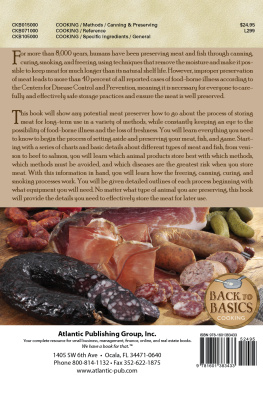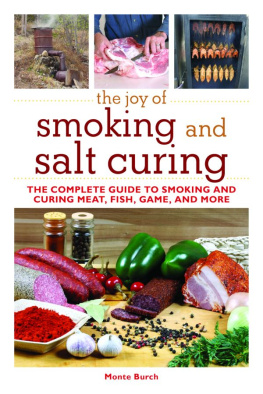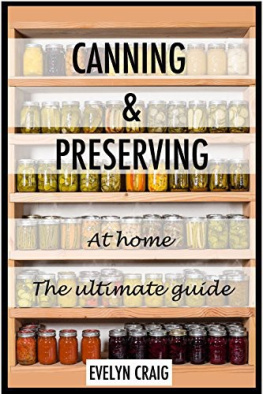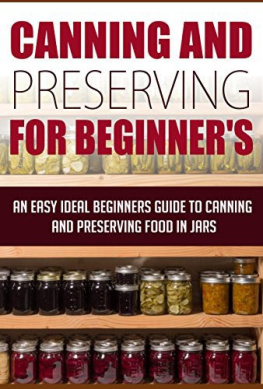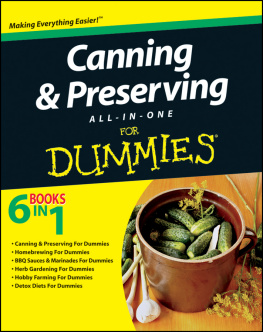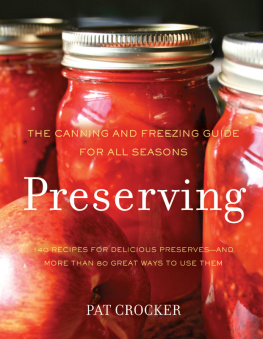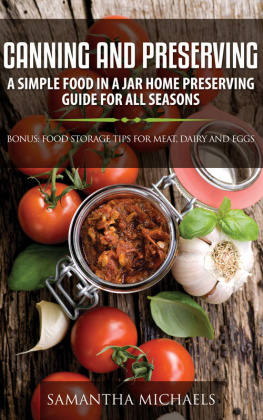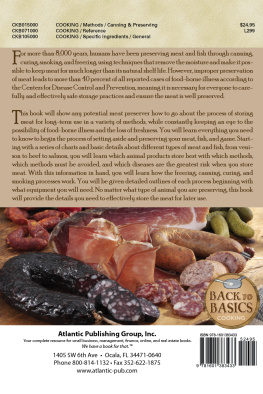The Art of
Preserving Game Birds and Big Game Animals
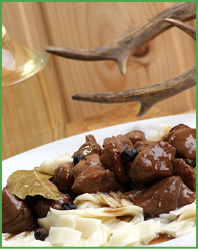
A Little Book Full of All the Information You Need
The Art of Preserving Game Birds and Big Game Animals: A Little Book Full of All the Information You Need
Copyright 2012 Atlantic Publishing Group, Inc.
1210 SW 23rd Place Ocala, Florida 34471
Phone 800-814-1132 Fax 352-622-1875
Web site:
SAN Number: 268-1250
No part of this publication may be reproduced, stored in a retrieval system, or transmitted in any form or by any means, electronic, mechanical, photocopying, recording, scanning, or otherwise, except as permitted under Section 107 or 108 of the 1976 United States Copyright Act, without the prior written permission of the Publisher. Requests to the Publisher for permission should be sent to Atlantic Publishing Group, Inc., 1210 SW 23rd Place, Ocala, Florida 34471.
All trademarks, trade names, or logos mentioned or used are the property of their respective owners and are used only to directly describe the products being provided. Every effort has been made to properly capitalize, punctuate, identify and attribute trademarks and trade names to their respective owners, including the use of and wherever possible and practical. Atlantic Publishing Group, Inc. is not a partner, affiliate, or licensee with the holders of said trademarks.
LIMIT OF LIABILITY/DISCLAIMER OF WARRANTY: The publisher and the author make no representations or warranties with respect to the accuracy or completeness of the contents of this work and specifically disclaim all warranties, including without limitation warranties of fitness for a particular purpose. No warranty may be created or extended by sales or promotional materials. The advice and strategies contained herein may not be suitable for every situation. This work is sold with the understanding that the publisher is not engaged in rendering legal, accounting, or other professional services. If professional assistance is required, the services of a competent professional should be sought. Neither the publisher nor the author shall be liable for damages arising herefrom. The fact that an organization or Web site is referred to in this work as a citation and/or a potential source of further information does not mean that the author or the publisher endorses the information the organization or Web site may provide or recommendations it may make. Further, readers should be aware that Internet Web sites listed in this work may have changed or disappeared between when this work was written and when it is read.

A few years back we lost our beloved pet dog Bear, who was not only our best and dearest friend but also the Vice President of Sunshine here at Atlantic Publishing. He did not receive a salary but worked tirelessly 24 hours a day to please his parents.
Bear was a rescue dog who turned around and showered myself, my wife, Sherri, his grandparents Jean, Bob, and Nancy, and every person and animal he met (well, maybe not rabbits) with friendship and love. He made a lot of people smile every day.
We wanted you to know a portion of the profits of this book will be donated in Bears memory to local animal shelters, parks, conservation organizations, and other individuals and nonprofit organizations in need of assistance.
Douglas & Sherri Brown
PS: We have since adopted two more rescue dogs: first Scout, and the following year, Ginger. They were both mixed golden retrievers who needed a home.
Want to help animals and the world? Here are a dozen easy suggestions you and your family can implement today:
- Adopt and rescue a pet from a local shelter.
- Support local and no-kill animal shelters.
- Plant a tree to honor someone you love.
- Be a developer put up some birdhouses.
- Buy live, potted Christmas trees and replant them.
- Make sure you spend time with your animals each day.
- Save natural resources by recycling and buying recycled products.
- Drink tap water, or filter your own water at home.
- Whenever possible, limit your use of or do not use pesticides.
- If you eat seafood, make sustainable choices.
- Support your local farmers market.
- Get outside. Visit a park, volunteer, walk your dog, or ride your bike.
Five years ago, Atlantic Publishing signed the Green Press Initiative. These guidelines promote environmentally friendly practices, such as using recycled stock and vegetable-based inks, avoiding waste, choosing energy-efficient resources, and promoting a no-pulping policy. We now use 100-percent recycled stock on all our books. The results: in one year, switching to post-consumer recycled stock saved 24 mature trees, 5,000 gallons of water, the equivalent of the total energy used for one home in a year, and the equivalent of the greenhouse gases from one car driven for a year.
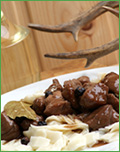
Introduction
For more than 8,000 years, humans have been preserving meat and fish through canning, curing, smoking, and freezing, using techniques that remove the moisture and make it possible to keep meat for much longer than its natural shelf life.
This book will introduce you to the art of preserving game birds and big game animals, how to go about the process of storing it for long-term use in a variety of methods, plus a few great recipes. As a bonus for all types of meat preservation, there is a chapter on the basic understanding of canning, curing, and smoking, and also a chapter on equipment, methods, and general instructions. This all followed by case studies of real stories from real people, along with a list of resources to help you learn more about the art of preserving all types of meat. We hope you enjoy!
Be sure to check out the other books in this series:
The Art of Preserving Beef : A Little Book Full of All the Information You Need
The Art of Preserving Poultry : A Little Book Full of All the Information You Need
The Art of Preserving Pork A Little Book Full of All the Information You Need
The Art of Preserving Lamb and Mutton Meat : A Little Book Full of All the Information You Need
The Art of Preserving Goat Meat : A Little Book Full of All the Information You Need
The Art of Preserving Bison Meat : A Little Book Full of All the Information You Need
The Art of Preserving Fish and Seafood : A Little Book Full of All the Information You Need
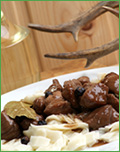
Chapter 1: Basic Understanding of the Canning, Curing, and Smoking Process
This chapter is designed to help the beginner and challenge the experienced meat preserver to learn all the different ways that meat can be preserved. There is some interesting chemistry involved in the process of making meat safe to eat after a long period of storage. Along with some basic instructions, general safety issues will be discussed, with more specific information to come later in the book. All temperatures in this book are in Fahrenheit, unless otherwise stated.
What is Canning, and how is it Beneficial?
The process for preserving food in glass jars was invented by Nicolas Appert in 1809 in response to a challenge from Napoleon to find a way to feed his army. As the size and complexity of armies increased, it became more difficult to provide food when the army was on the move. The traditional method of an army scavenging and living off the land could not be sustained during long-term campaigns. When Appert first discovered the canning process, he did not have any knowledge of the science of bacteriology or food decay. Over a period of 14 years of experimentation using trial and error, he discovered that food heated to temperatures above 212 degrees and sealed in glass bottles could be preserved safe for human consumption for long periods of time.


